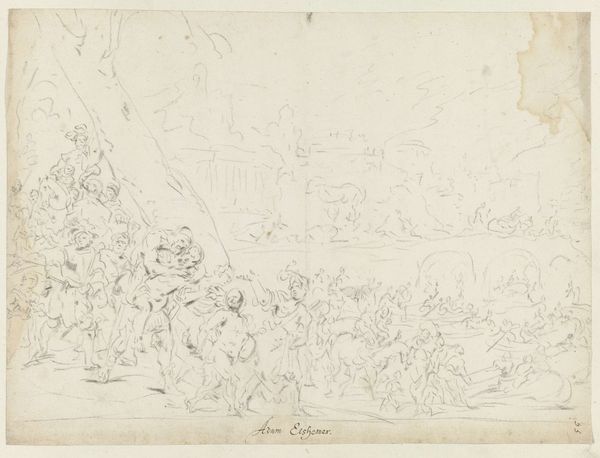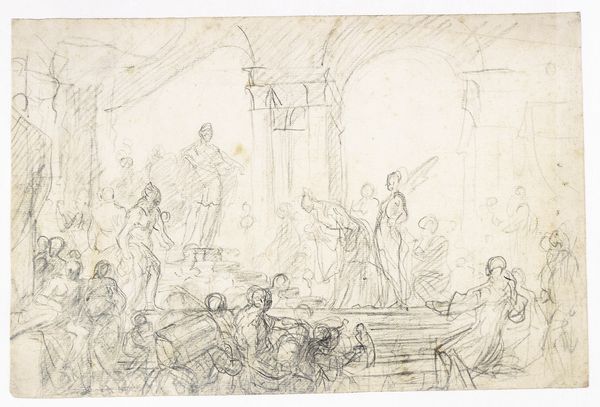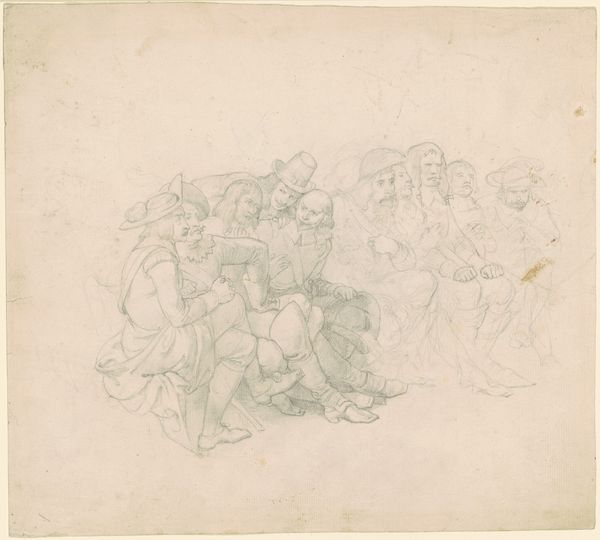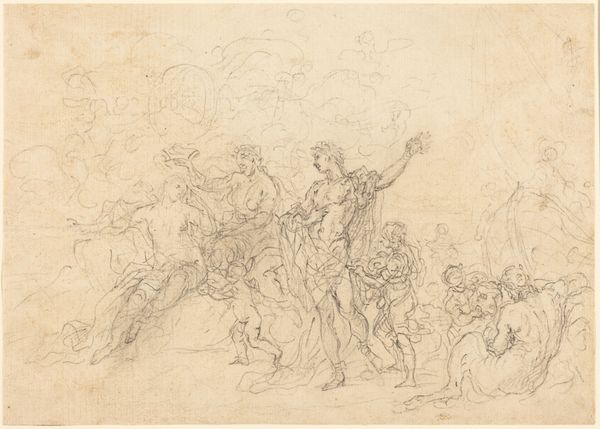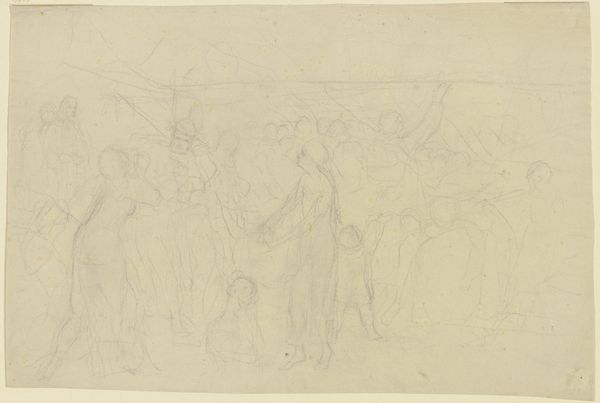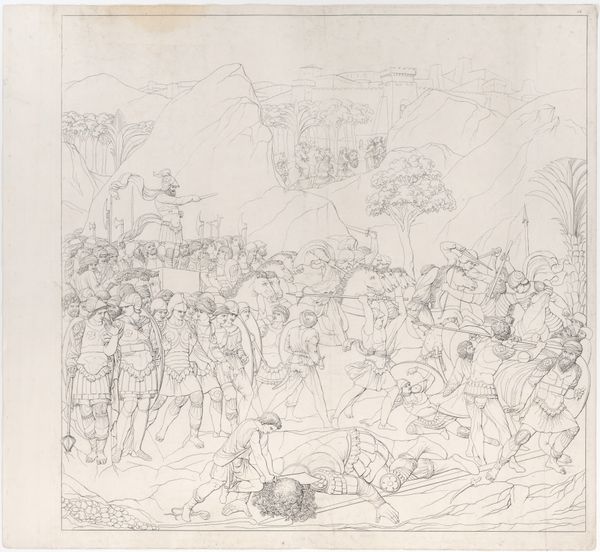
drawing, pencil
#
drawing
#
landscape
#
figuration
#
pencil
#
genre-painting
Copyright: Public Domain
Editor: Here we have Carl Engel's "Bauerntanz unter der Dorflinde", a pencil drawing. It depicts a lively scene, seemingly a dance under a linden tree, and strikes me as having a beautifully balanced composition despite the bustle. What aspects of the drawing stand out to you? Curator: The orchestration of lines dictates our reading of this work. Note how Engel uses variations in line weight to create a sense of depth. Thicker lines delineate figures in the foreground, establishing their prominence, while thinner lines suggest spatial recession. Editor: I see that, the figures up front seem to pop forward slightly because they're bolder. Does this technique lead you to any particular interpretation? Curator: Indeed. It reinforces the significance of spatial relationships in conveying narrative. Observe the centrifugal composition, where all activity appears to radiate from the central tree. The structure guides the viewer's eye and organizes the visual information into distinct compositional zones. Editor: That's fascinating. It’s like he’s visually directing the energy of the piece. Does the landscape style inform your view of its structure as well? Curator: Certainly. Engel juxtaposes the softness of the natural elements with the sharper geometry of the buildings in the background. This opposition directs our focus toward the central narrative. The tree acts as a framing device. What appears random on the surface is, in fact, meticulously structured to engage the viewer and communicate the essence of the scene. Editor: It’s amazing to think about the deliberate choices behind what initially seems like a simple village scene. It’s a good reminder to look beyond the obvious and consider the structural intent of the artist. Curator: Precisely. Through form and arrangement, an artist communicates far more than just the subject matter at hand. It prompts me to examine the mechanics of art.
Comments
No comments
Be the first to comment and join the conversation on the ultimate creative platform.
